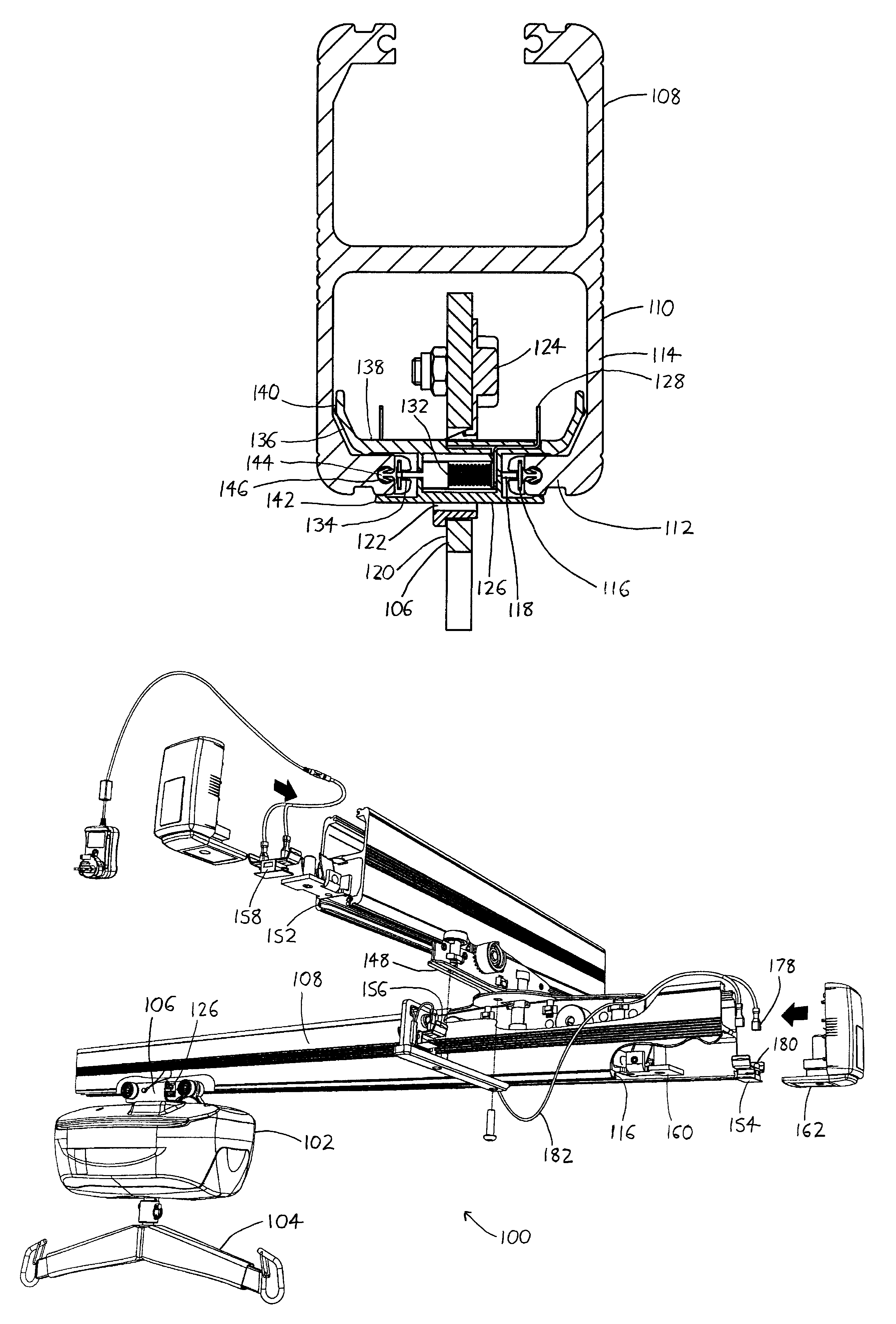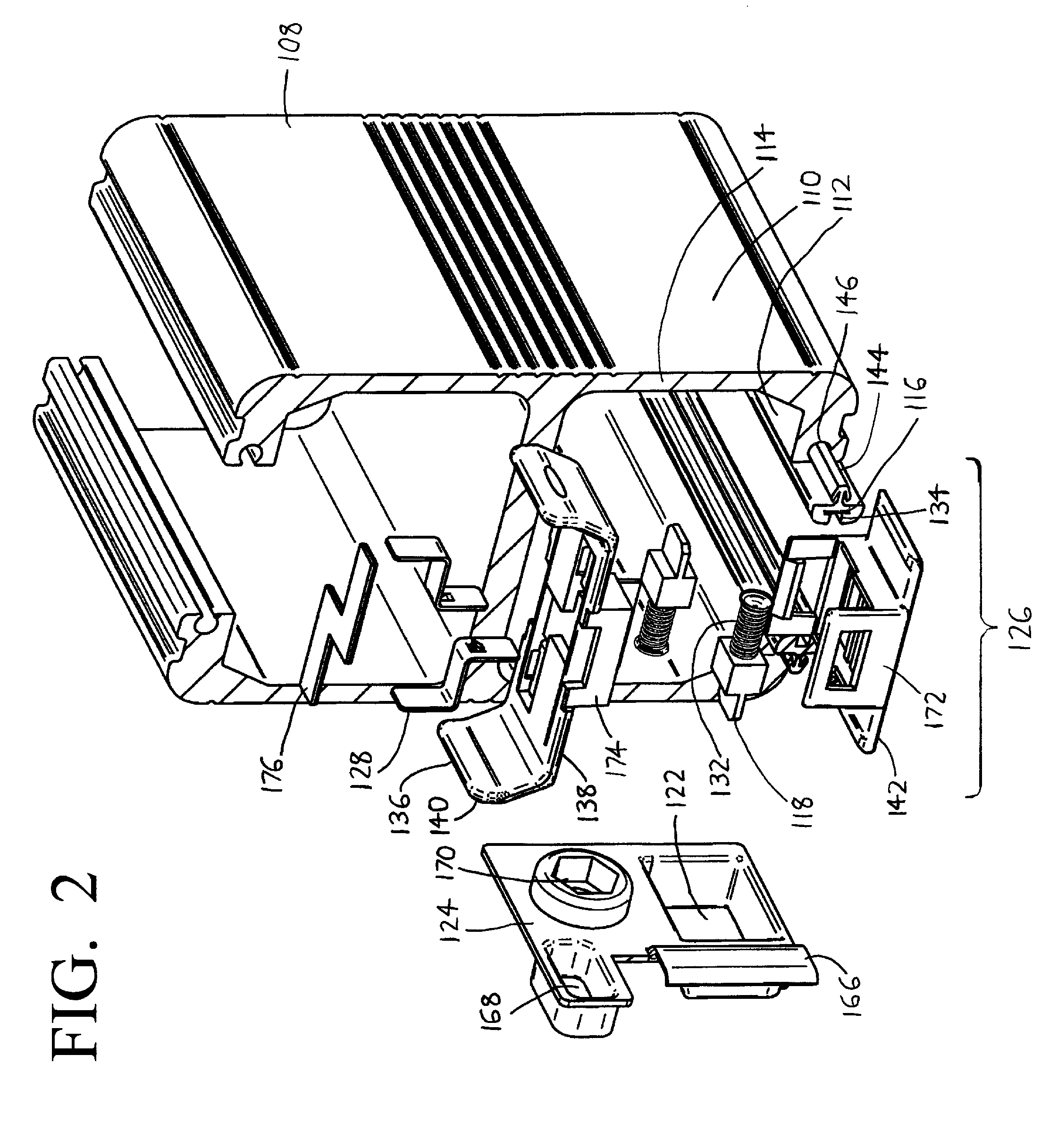Conductive connection for track-riding patient hoists
a technology for connecting cables and patient hoists, which is applied in the field of hoists, can solve problems such as difficulty in restoring the functionality of the hoist, inoperable batteries and hoists, and sometimes thwarted return-to-charger features
- Summary
- Abstract
- Description
- Claims
- Application Information
AI Technical Summary
Benefits of technology
Problems solved by technology
Method used
Image
Examples
Embodiment Construction
[0016]Expanding on the discussion above, the hoist 102 and track 108 illustrated throughout the drawings are adapted from the KWIKtrack and hoist system of BHM Medical Inc. (Magog, QC, Canada), which is available with a number of different track and hoist configurations. The exemplary track 108 illustrated throughout the drawings is configured similarly to a pair of C-channels which are joined with their mouths facing in opposing directions, as best seen in FIG. 3. Usefully, some versions of the KWIKtrack track, already include the connection grooves 146, which can be used to receive the connection tongues 144 of the track conductors 116 as previously described. Thus, the track 148 is readily constructed by simply installing the track conductors 116 therein. Once the track conductors 116 are installed within the track 108, the hoist trolley 106 may be installed on the track 108 by slipping the hoist trolley 106 between the track sides 110 (as illustrated in FIG. 1). At the same time...
PUM
 Login to View More
Login to View More Abstract
Description
Claims
Application Information
 Login to View More
Login to View More - R&D
- Intellectual Property
- Life Sciences
- Materials
- Tech Scout
- Unparalleled Data Quality
- Higher Quality Content
- 60% Fewer Hallucinations
Browse by: Latest US Patents, China's latest patents, Technical Efficacy Thesaurus, Application Domain, Technology Topic, Popular Technical Reports.
© 2025 PatSnap. All rights reserved.Legal|Privacy policy|Modern Slavery Act Transparency Statement|Sitemap|About US| Contact US: help@patsnap.com



